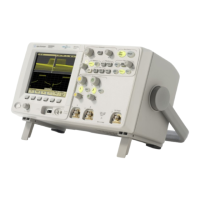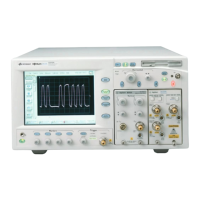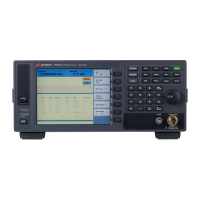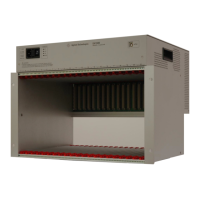6 Measurements and Math Functions
230 InfiniiVision Oscilloscopes User’s Guide
Differentiate
d/dt (differentiate) calculates the discrete time derivative of the selected source. You can
use differentiate to measure the instantaneous slope of a waveform. For example, the
slew rate of an operational amplifier may be measured using the differentiate function.
Because differentiation is very sensitive to noise, it is helpful to set acquisition mode to
Averaging in the Acquire Menu.
d/dt plots the derivative of the selected source using the “average slope estimate at 4
points” formula. The equation is:
Where
d = differential waveform
y = channel 1, 2, 3, or 4, or g(t) (internal arithmetic operation) data points
i = data point index
t = point-to-point time difference
1 Press the [Math] key, press the Function softkey and select f(t), press the Operator
softkey and select d/dt. Press the Source, Scale, or Offset sofkeys if you want to
change the source, scaling, or offset for the differentiate function.
• Source — selects the source for d/dt. (See page 225 for information about using
g(t) as the source.)
• Scale — lets you set your own vertical scale factors for d/dt expressed in
units/second/division, where units can be V (Volts), A (Amps), or W (Watts). Units
are set in the channel Probe Menu. Press the Scale softkey, then turn the Entry
knob to rescale d/dt.
• Offset —lets you set your own offset for the dV/dt math function. The offset value
is in units/second where units can be V (Volts), A (Amps), or W (Watts) and is
represented by the center horizontal grid line of the display. Press the Offset
softkey, then turn the Entry knob to change the offset for d/dt.
A scale unit of U (undefined) will be displayed for scale and offset if the two source
channels are set to dissimilar units. Units are set using the channel’s Probe Units
softkey.
d
i
= y
i+4
+ 2y
i+2
– 2y
i-2
– y
i-4
8t
